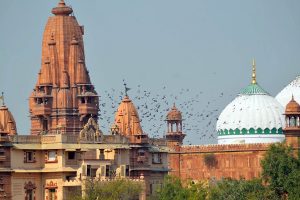Far away from the modern world of artificial items, the Serampore Aat-er Palli has come up with an innovative idea to uphold the ancient way of paddy cultivation followed by Bengal’s traditional Nabanna Utsav.
The jute-made pandal carries one back to a century when technology did not invade paddy cultivation and Nabanna Utsab.
The rural Bengal, as picturised by Sarat Chandra Chattopadhyay and other writers from Bengal, vividly comes alive. The pandal is a lesson for the present generation, who have not been exposed to such a lifestyle.
Artisans from Neemtouri, Tamluk, East Midnapore have presented skills of the highest order in shaping different stages of paddy cultivation.
The sowing of paddy seeds, preparations of seed beds, transferring of paddy seedlings to the agricultural land, the reaping of the paddy crops with the traditional scythe, thrashing out of the paddy seeds from hay, storing of paddy seeds in gola (granary), everything is well defined.
The traditional Nabanna Utsab is vividly depicted; women are seen operating the dhekhi to produce fine rice flour from which pitha puli are prepared. The traditional folk dance on the occasion of Nabanna Utsab is shown by Jute fibers.
Secretary of Aat-er Palli club Sumanto Ash said, “Our main aim and object is to uphold Bengal’s traditional values. Art, culture, agriculture and the importance of Jute fiber can play a major role in the cottage industry, generating job opportunities and economic development.”












